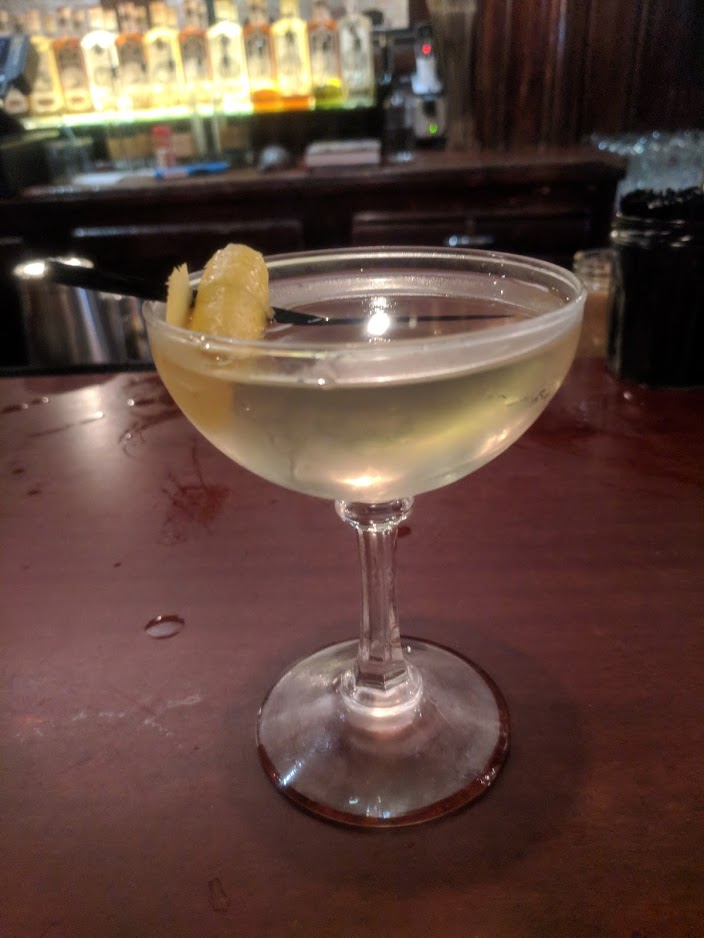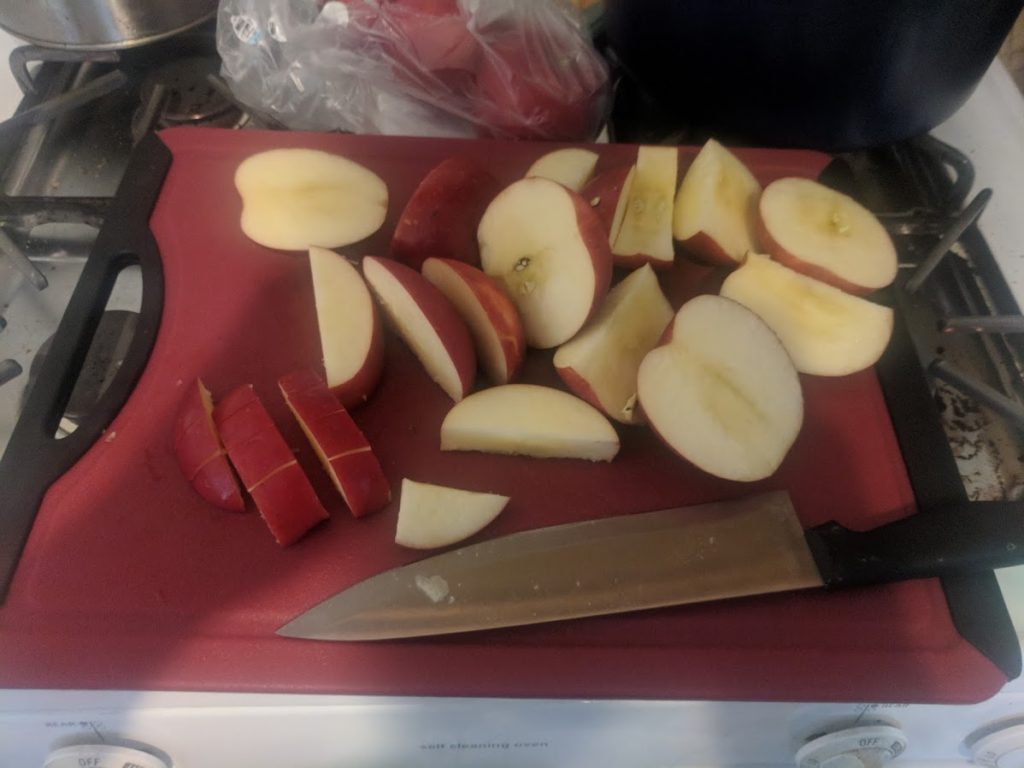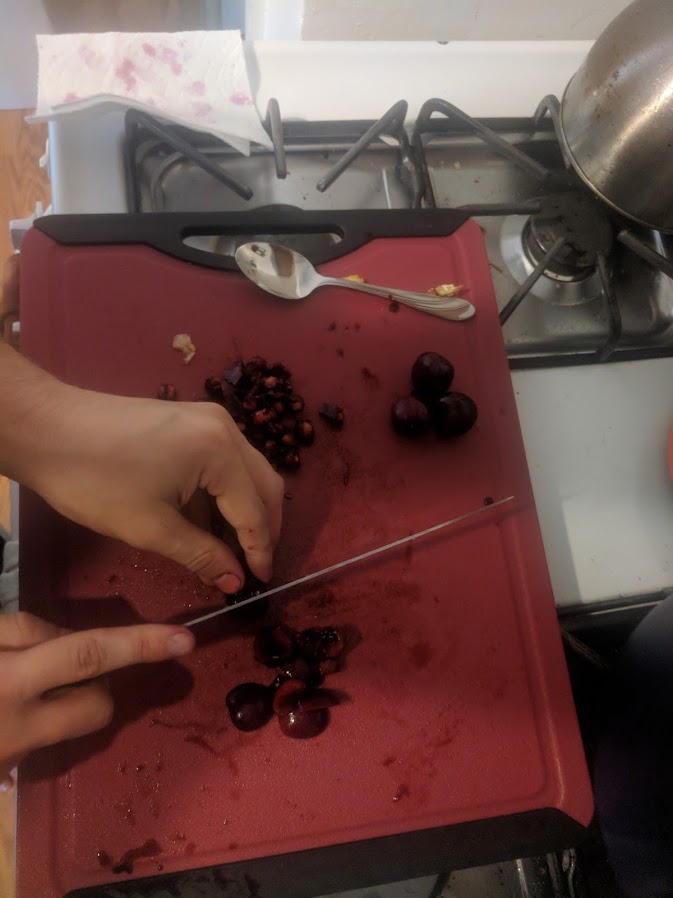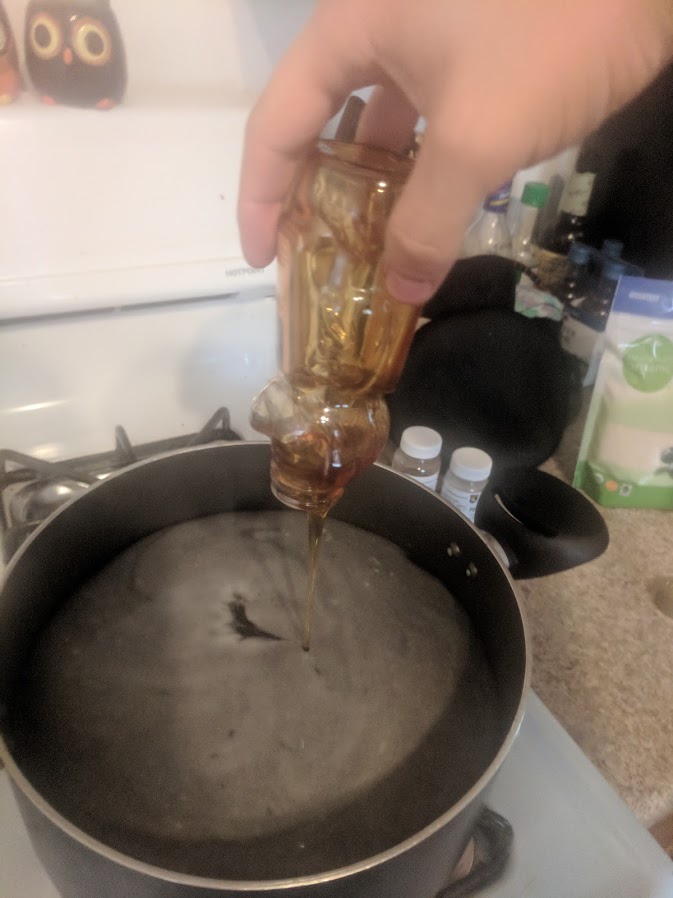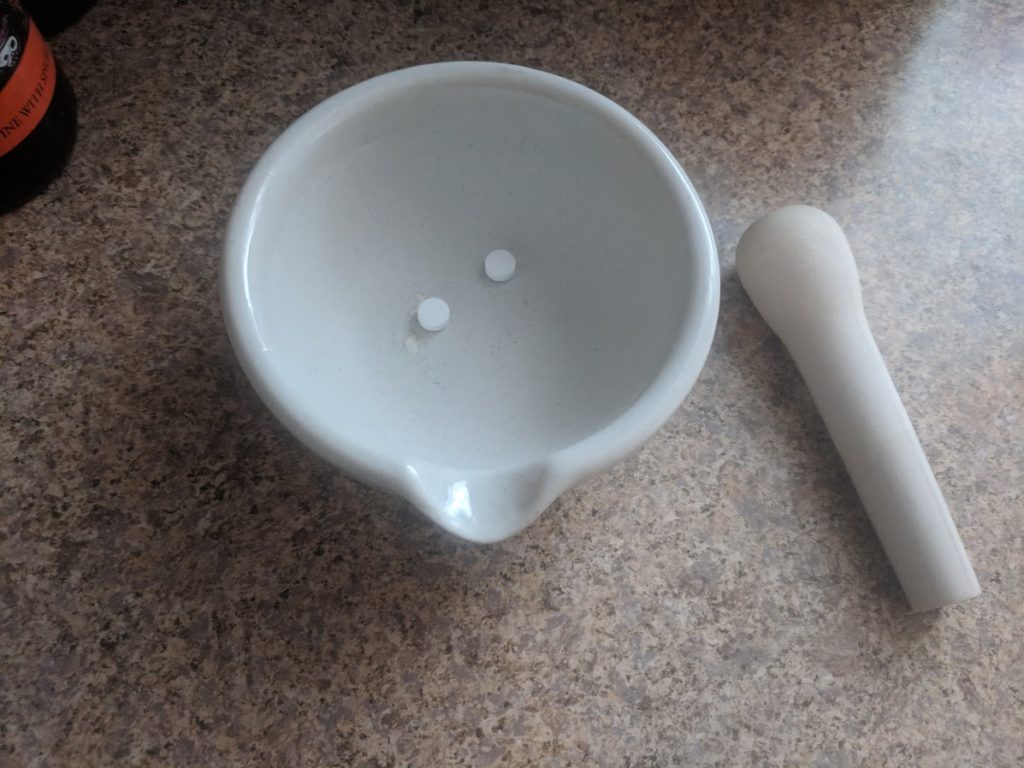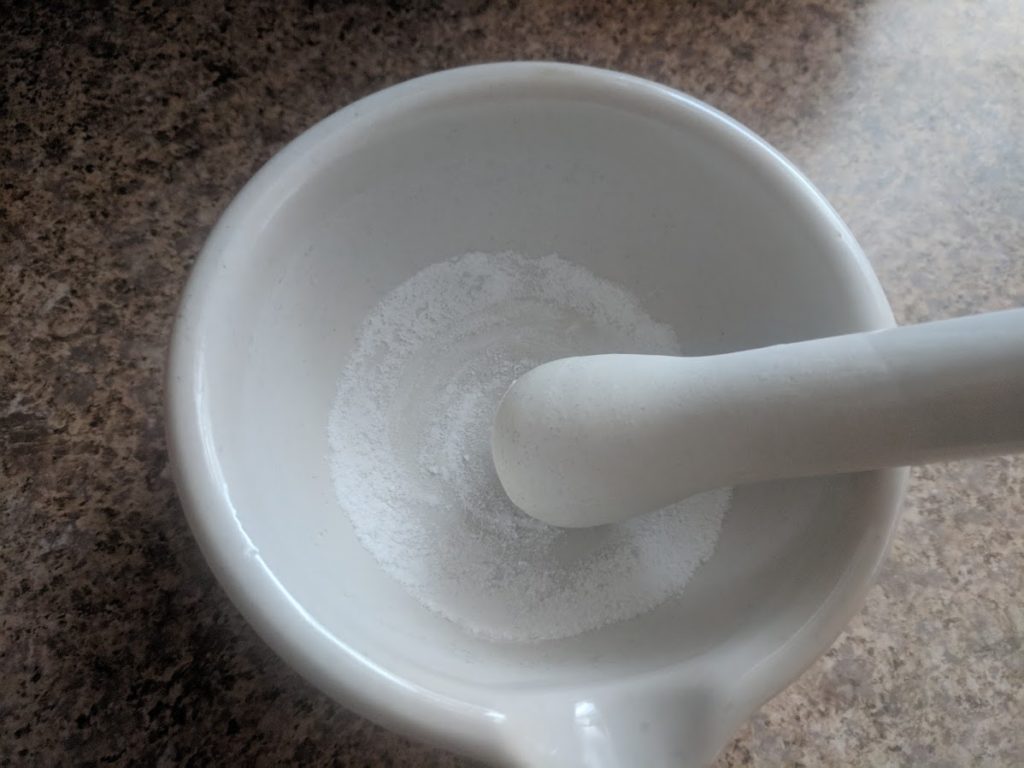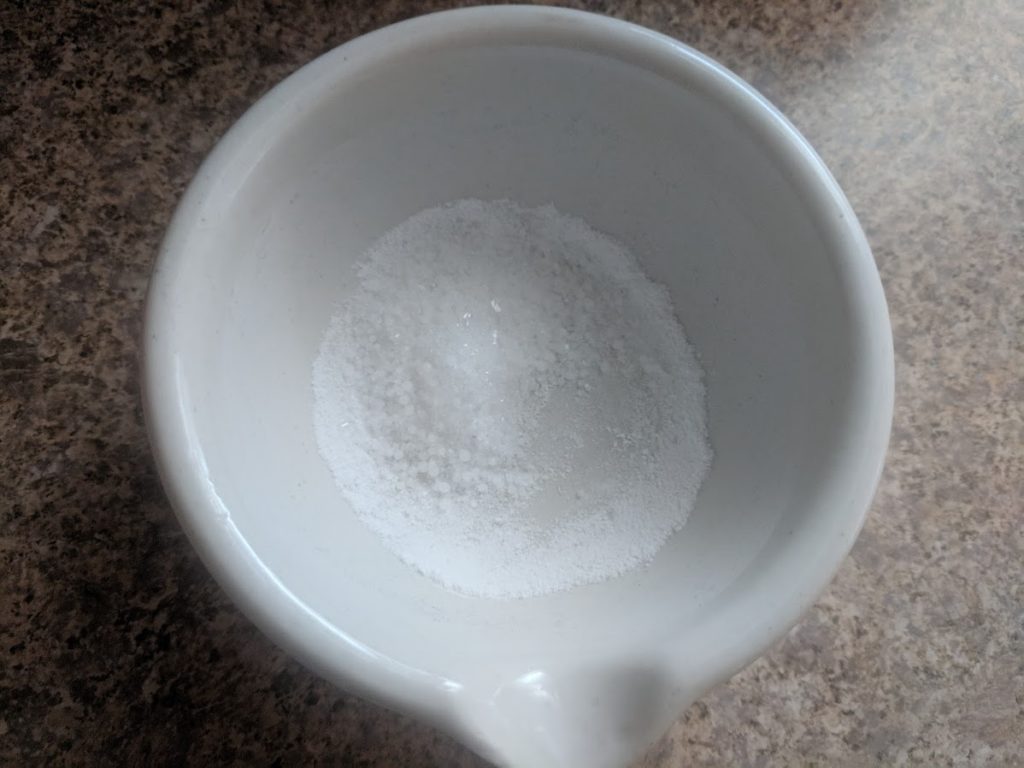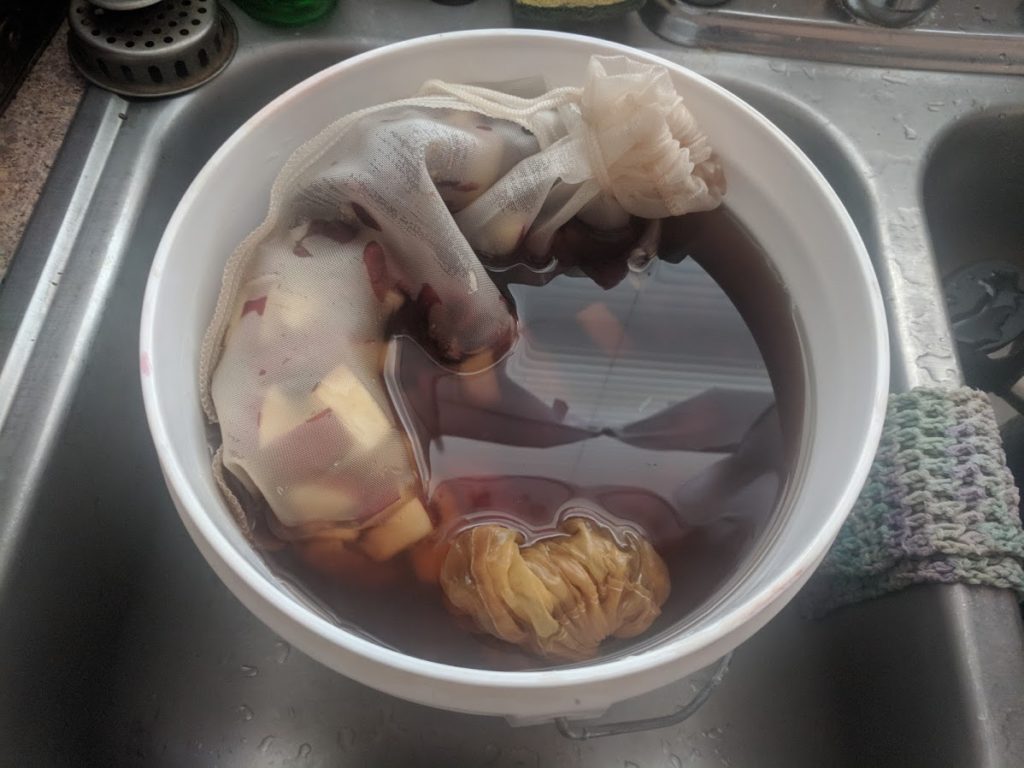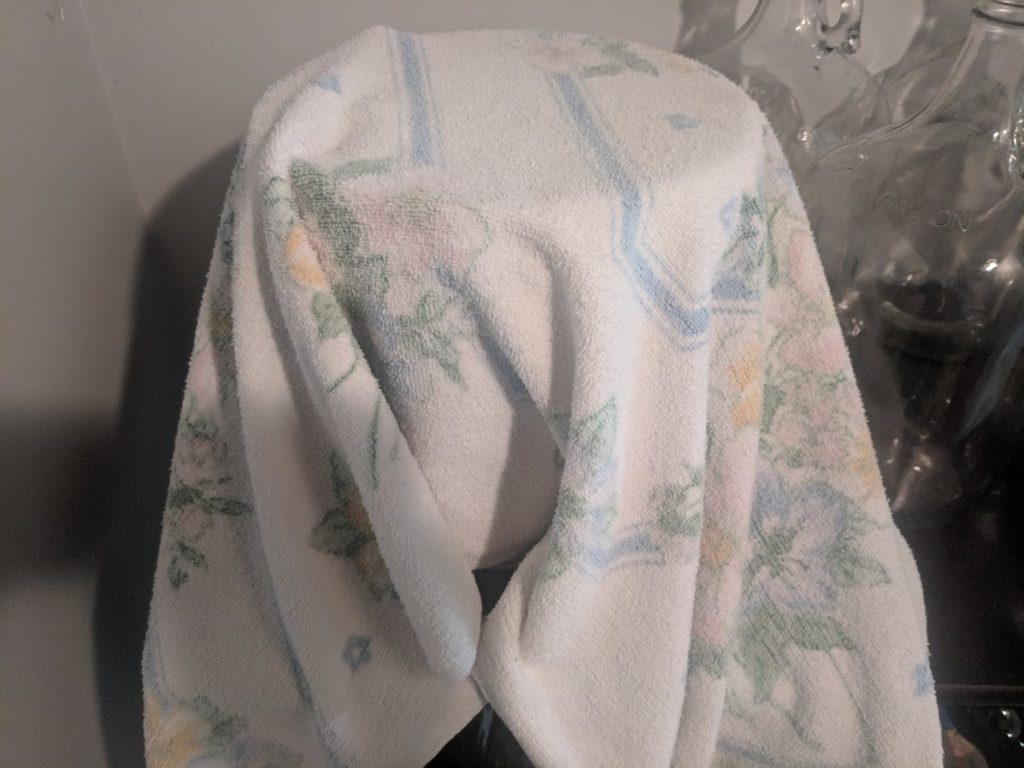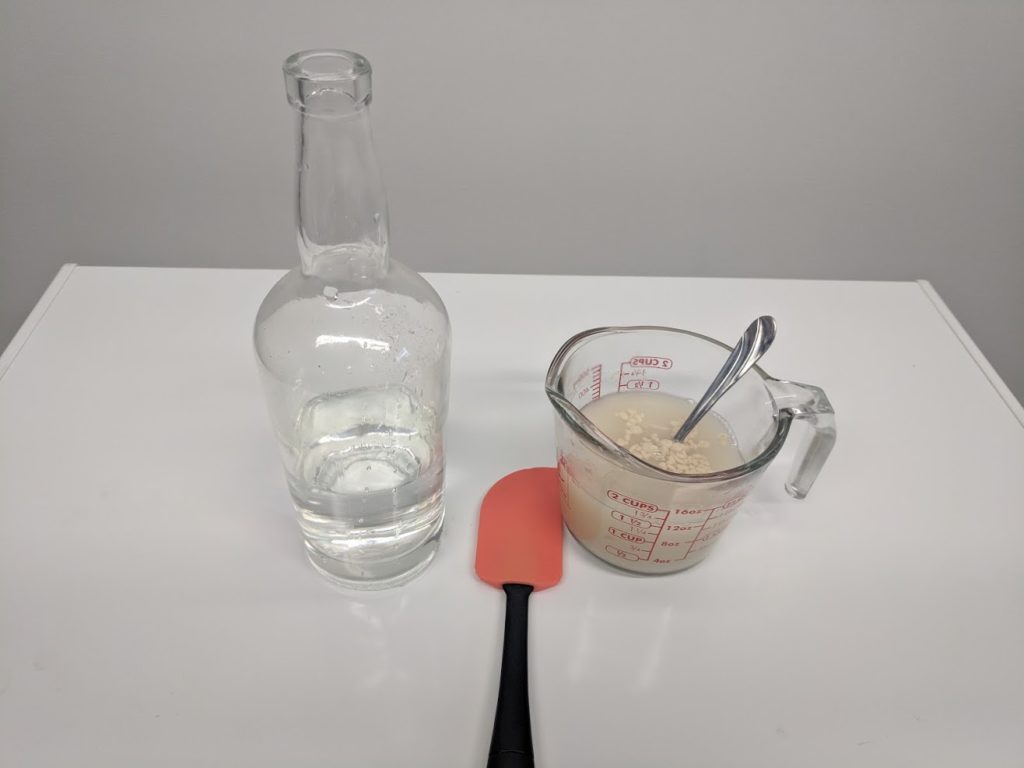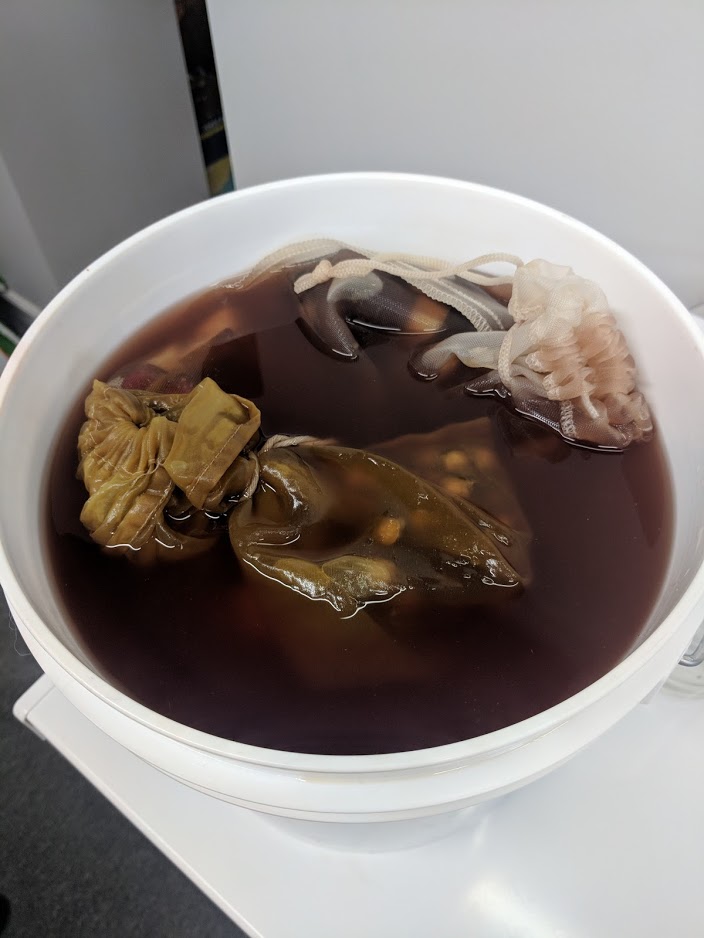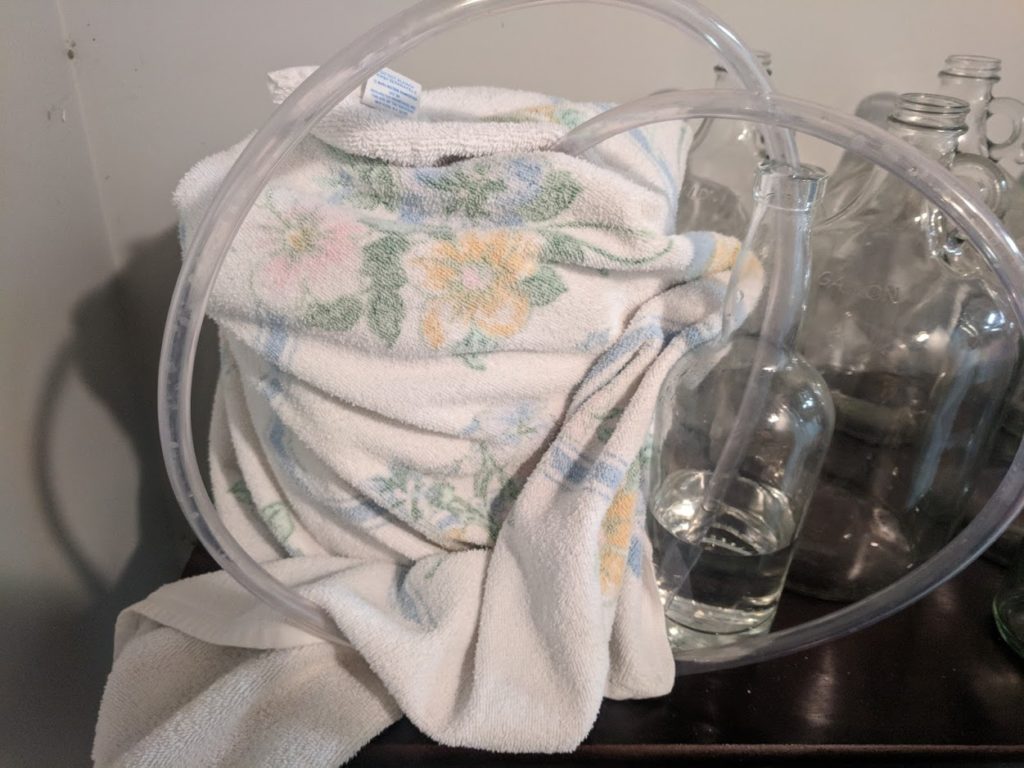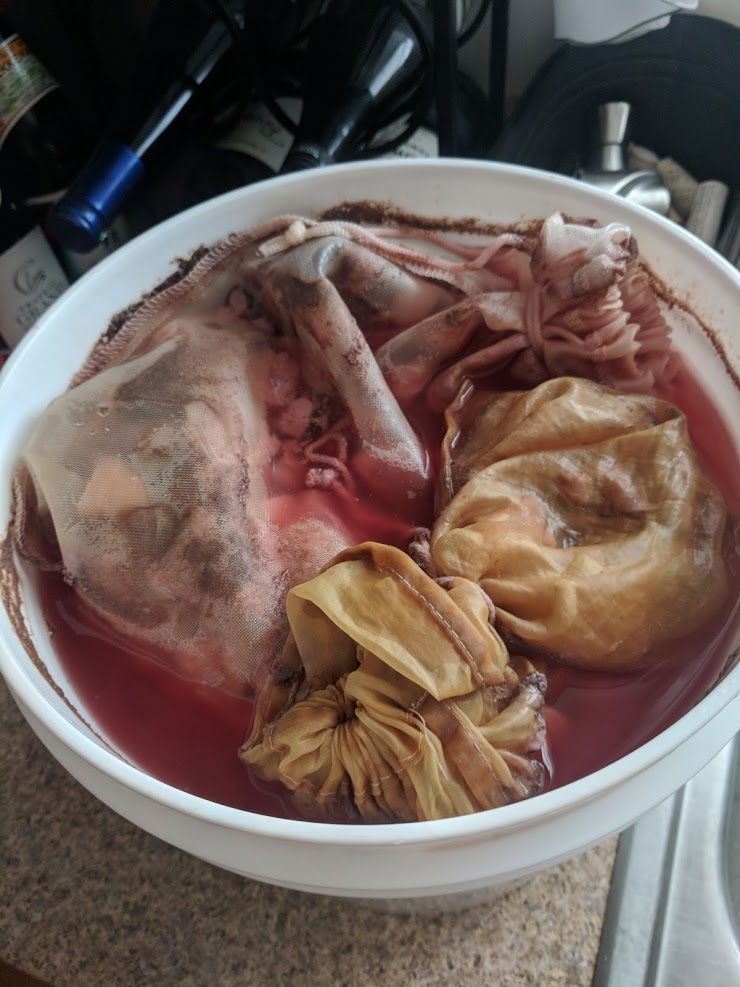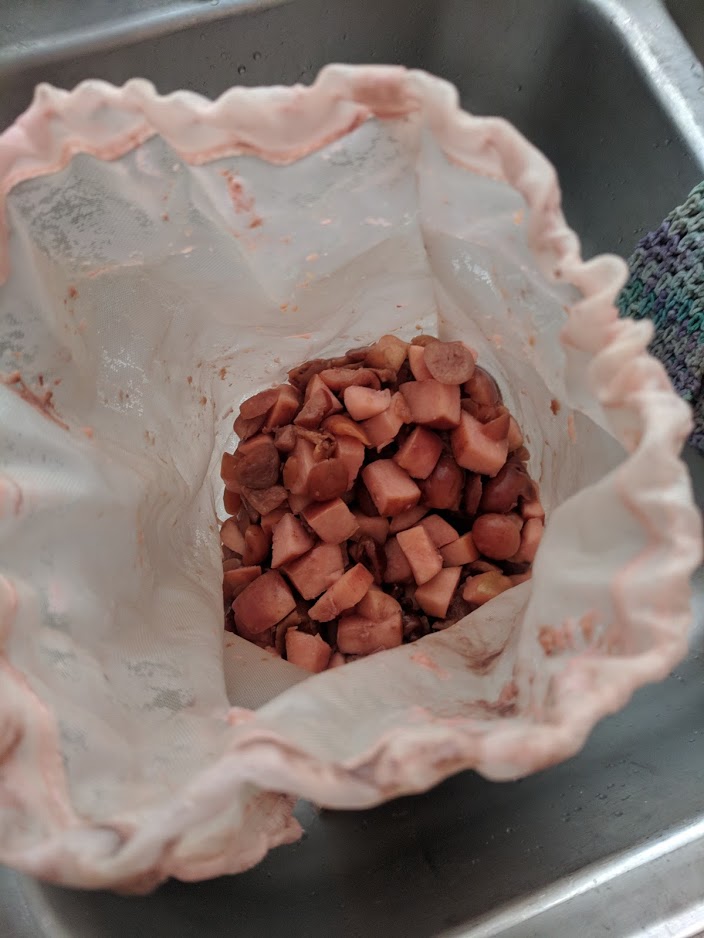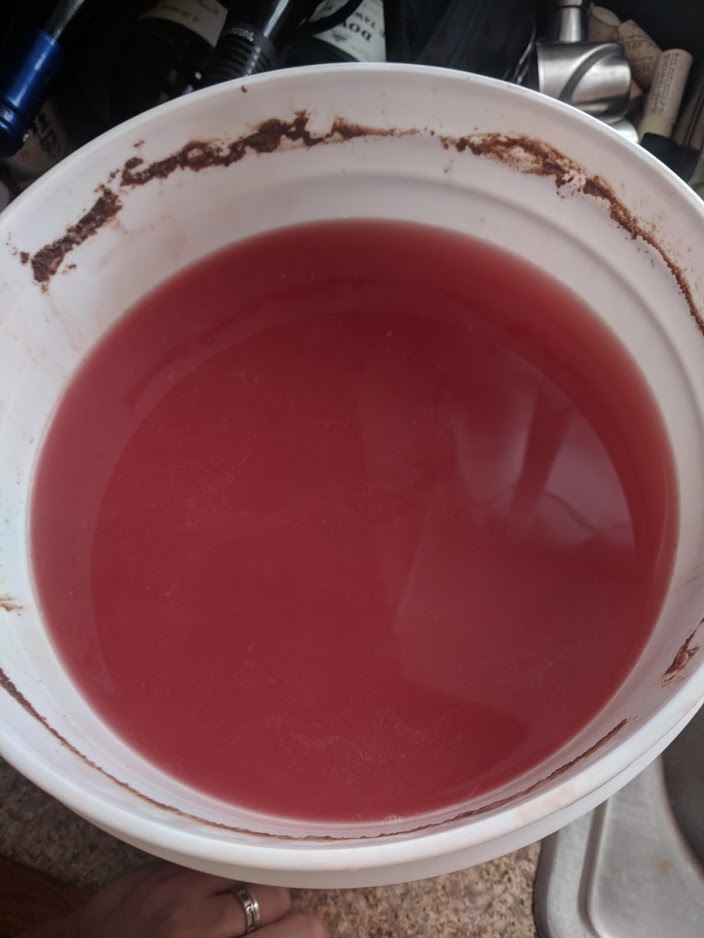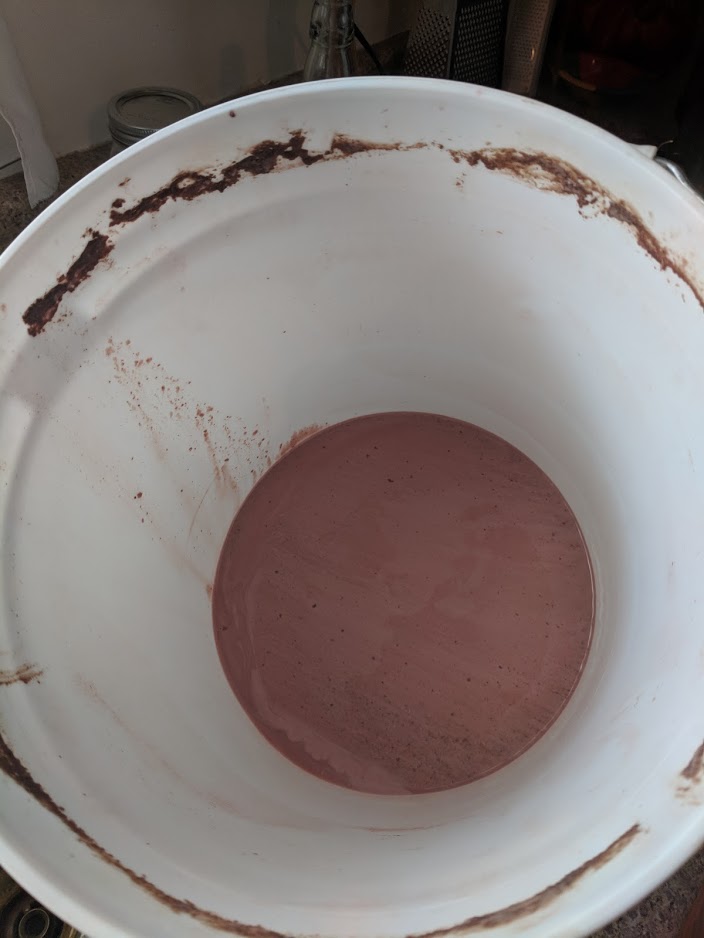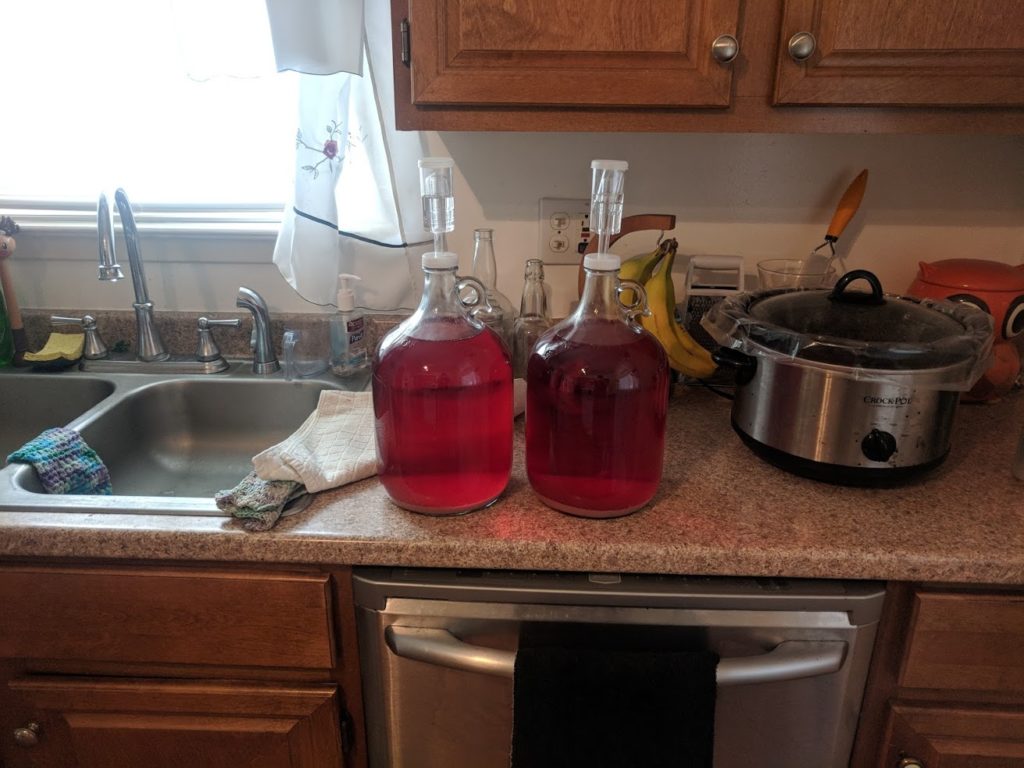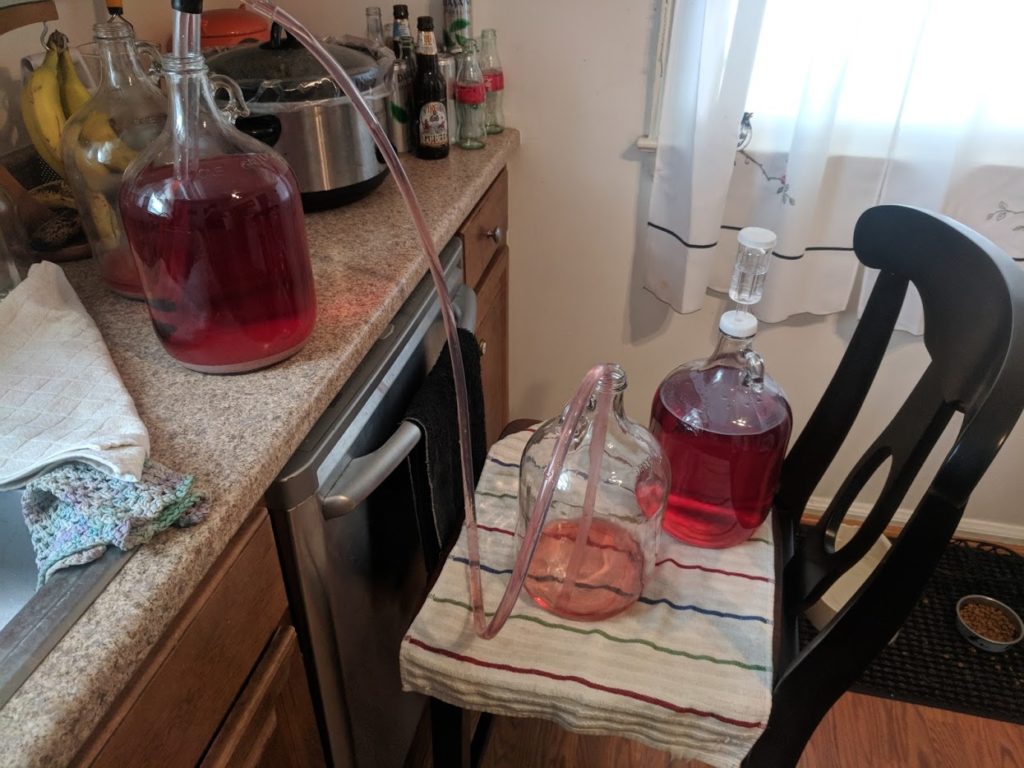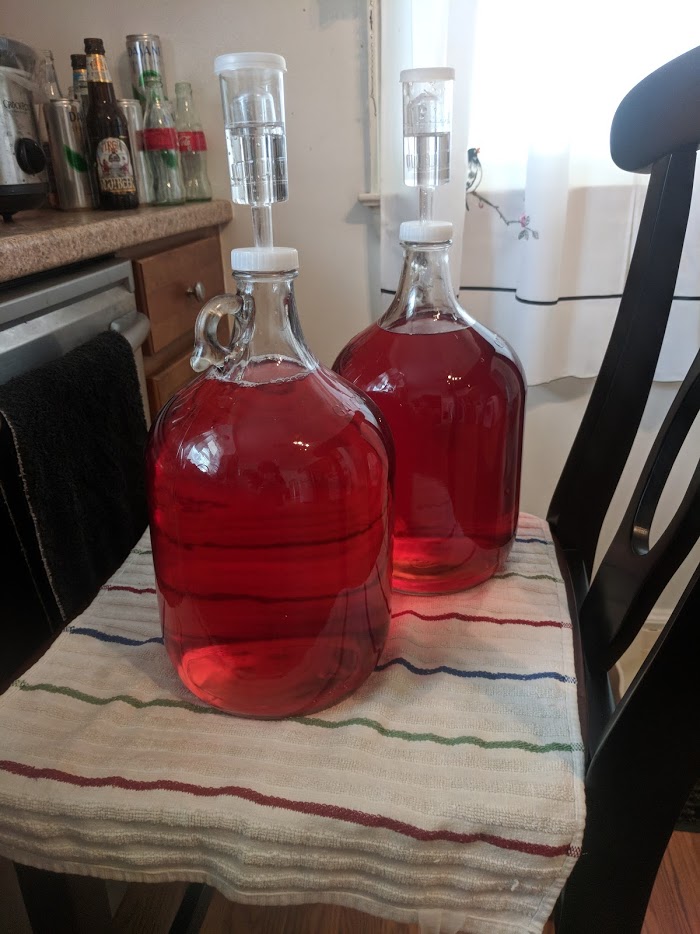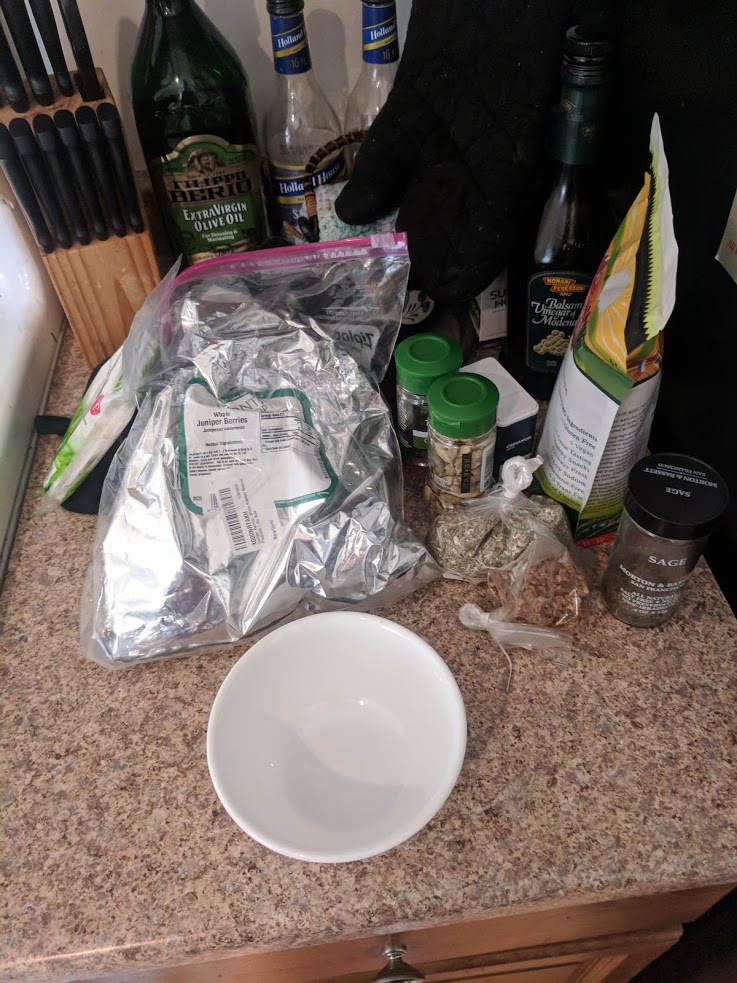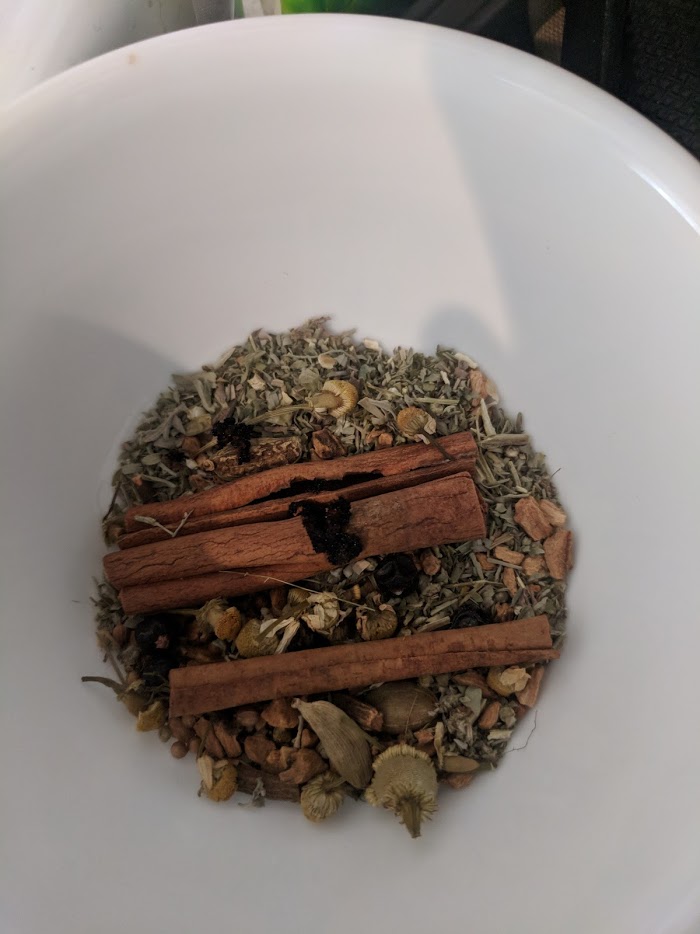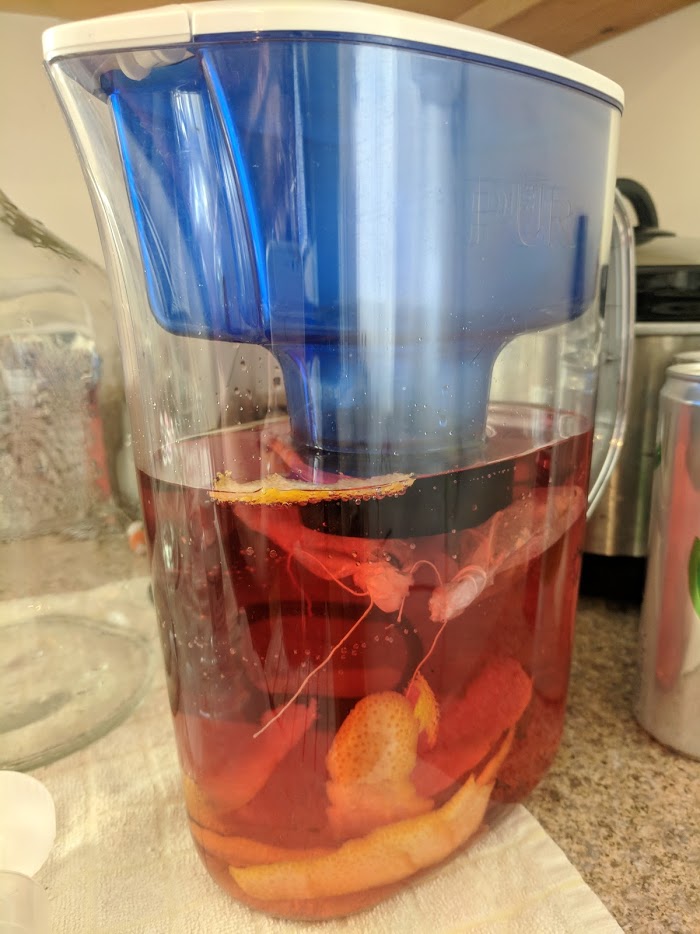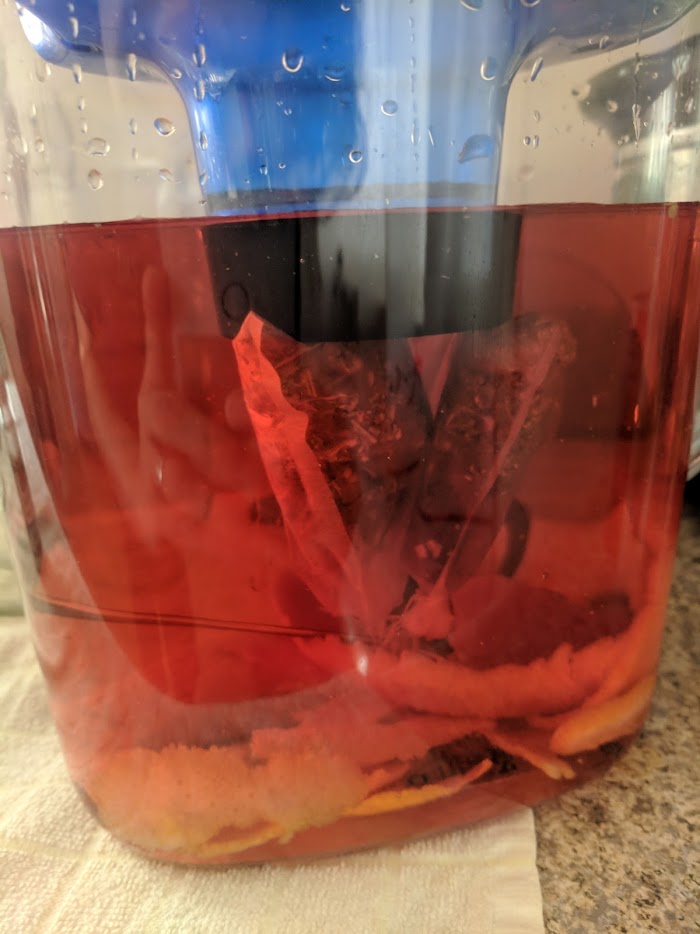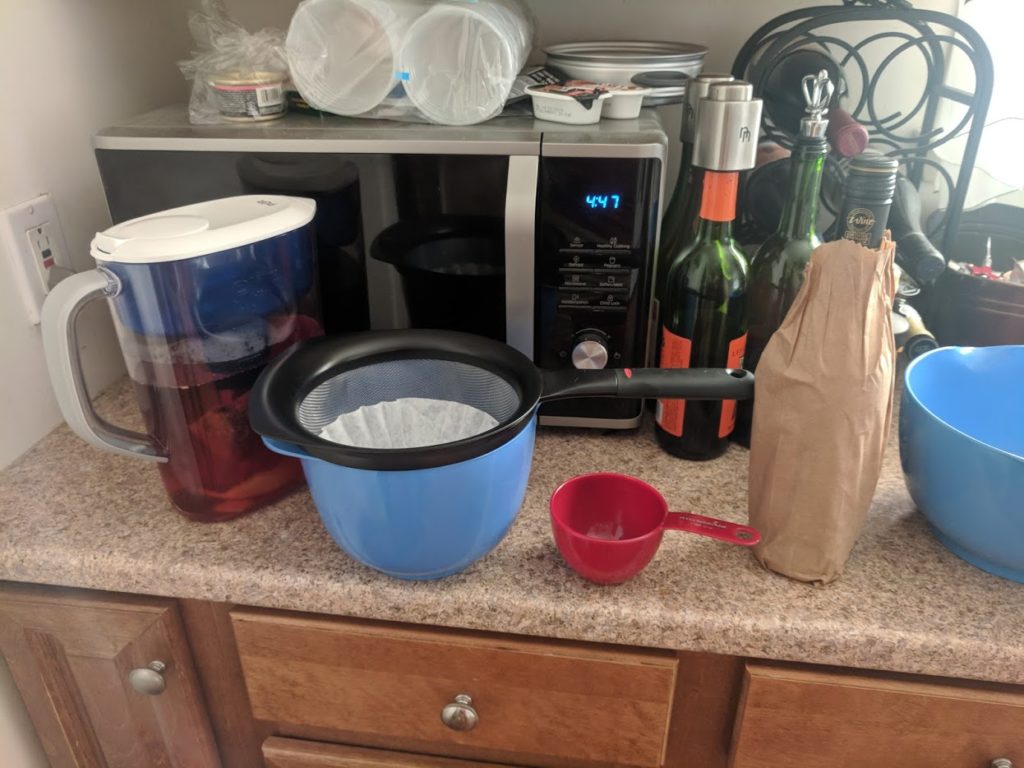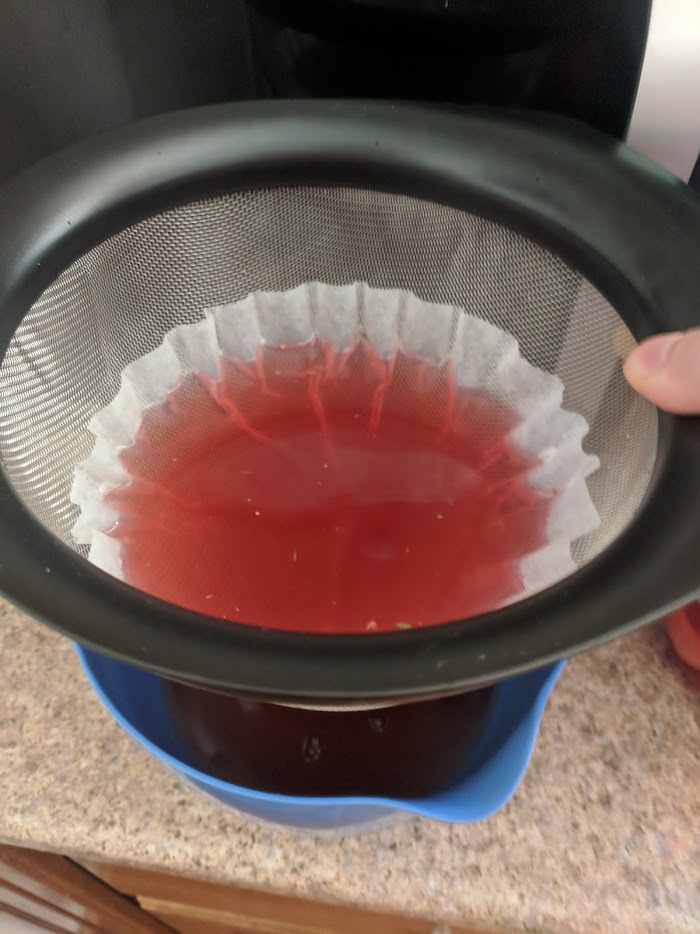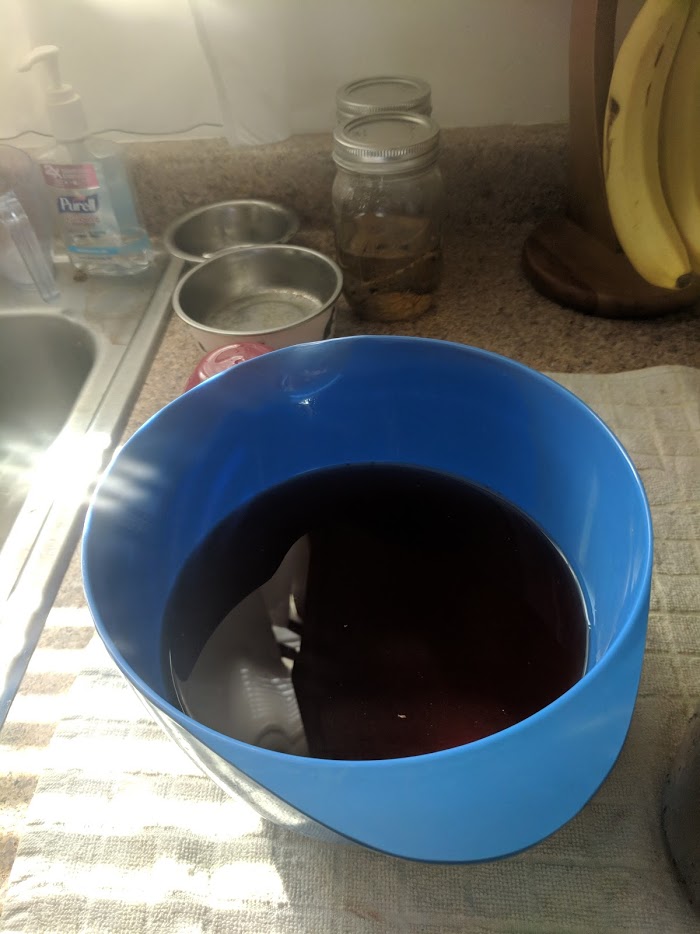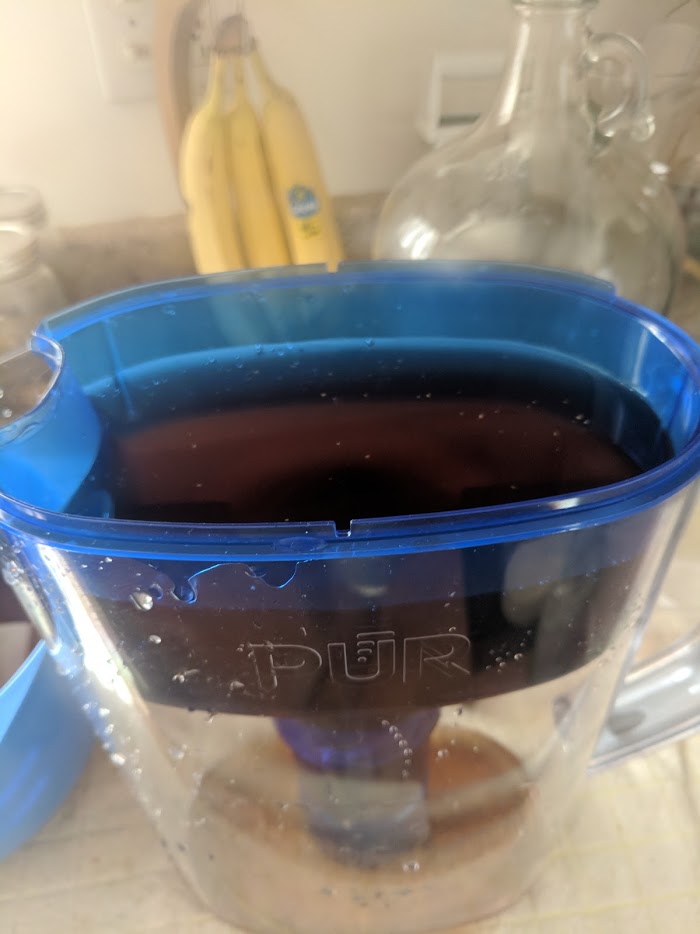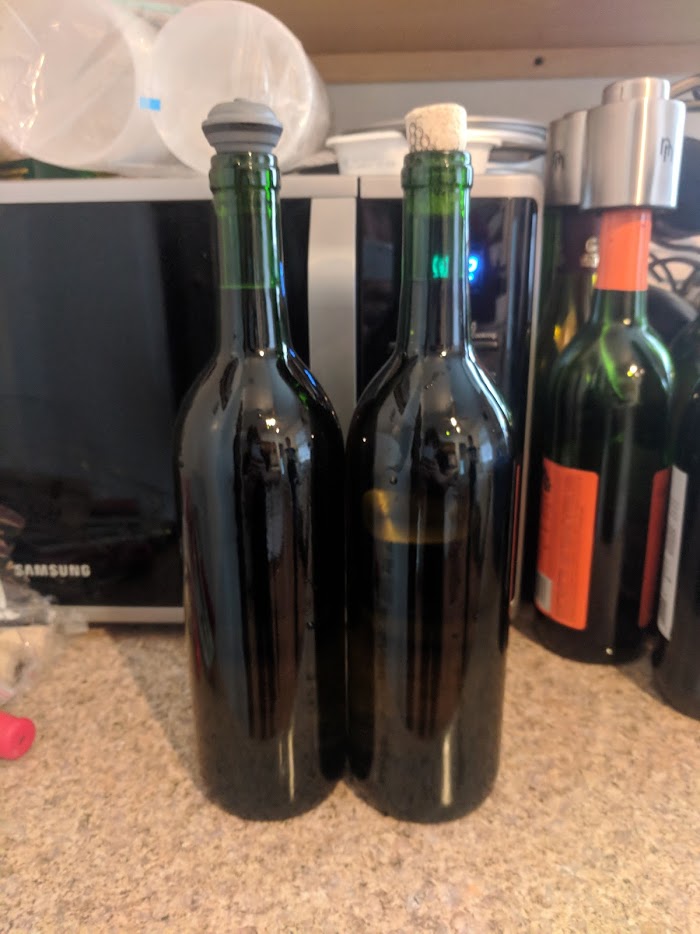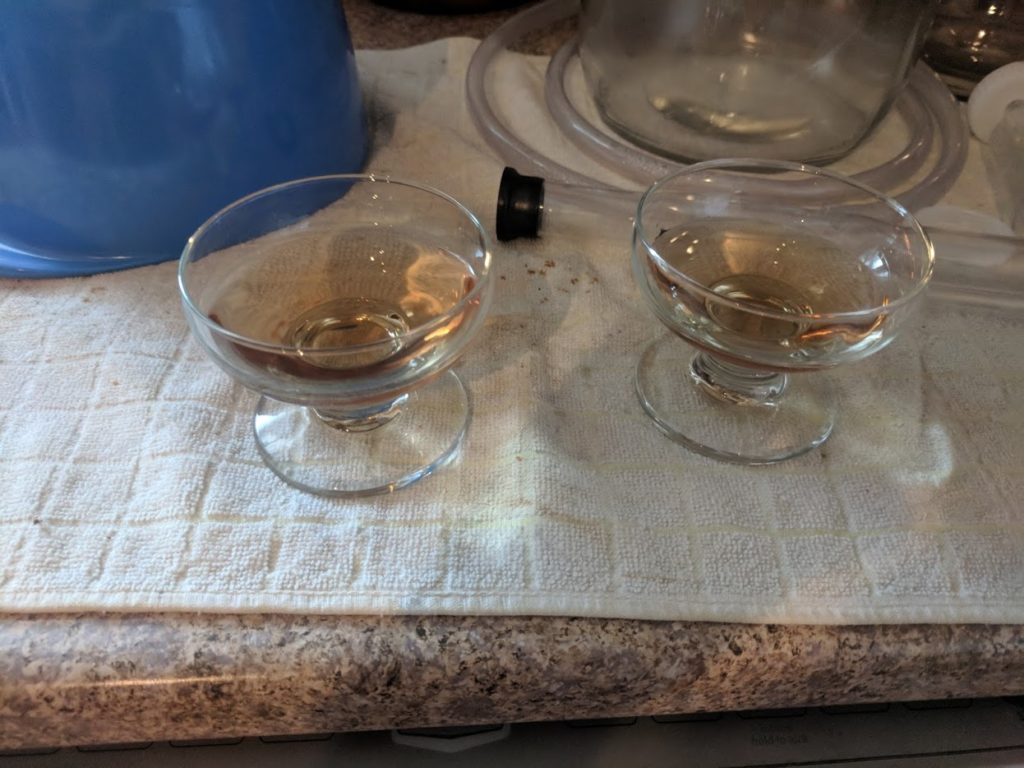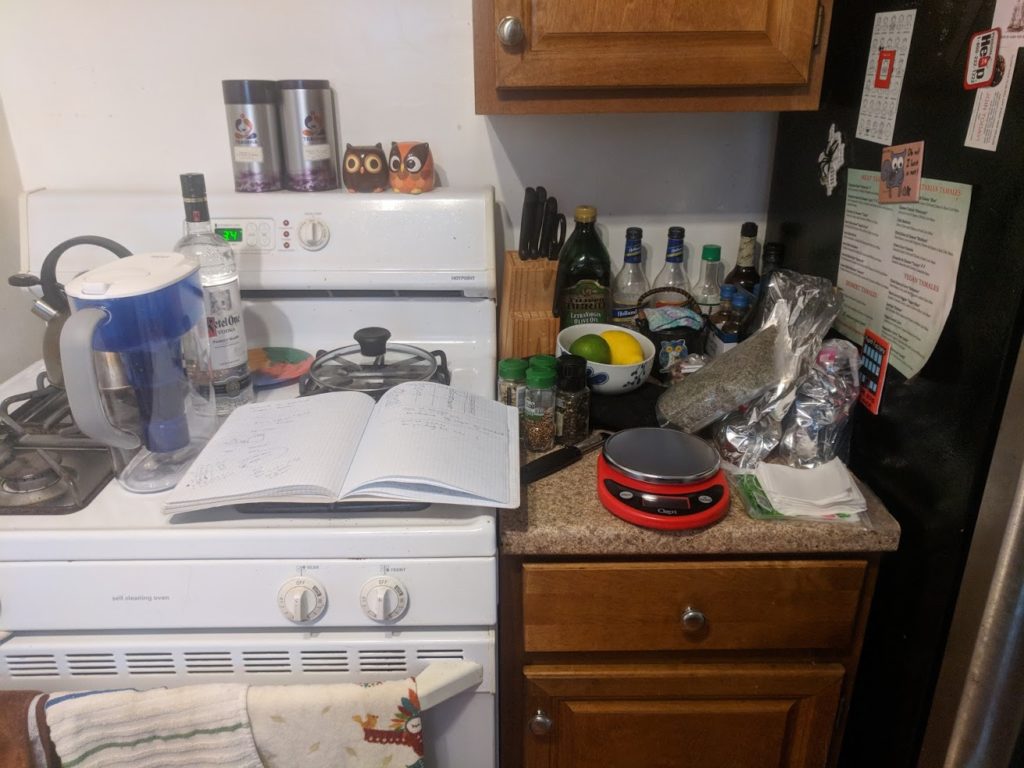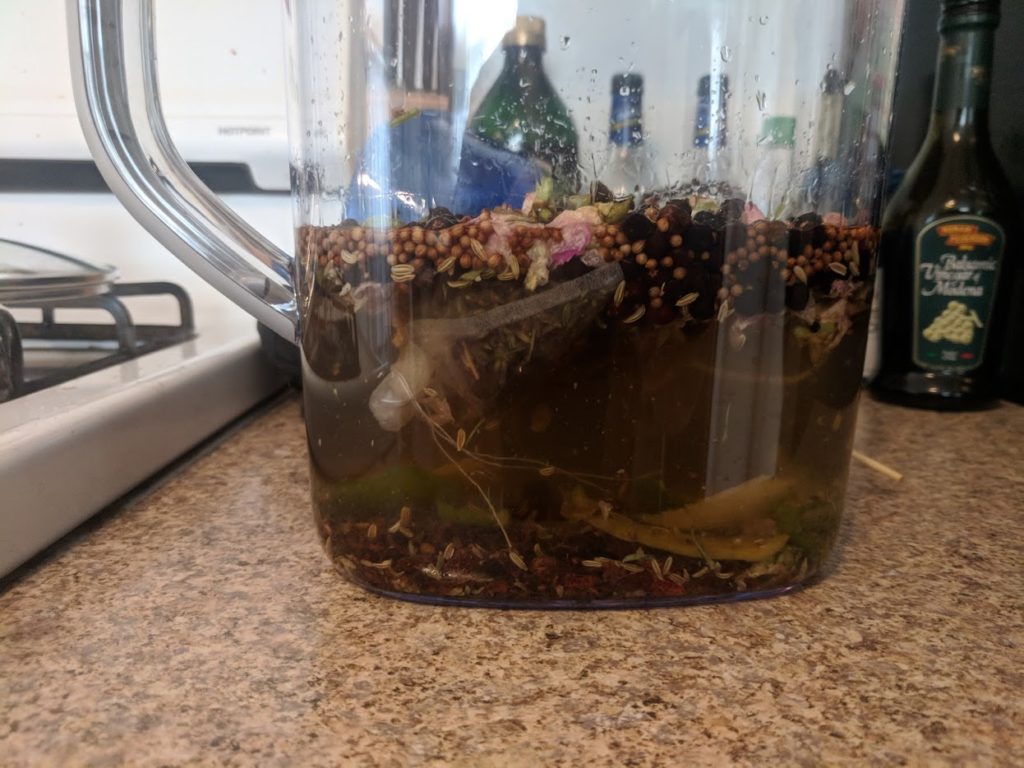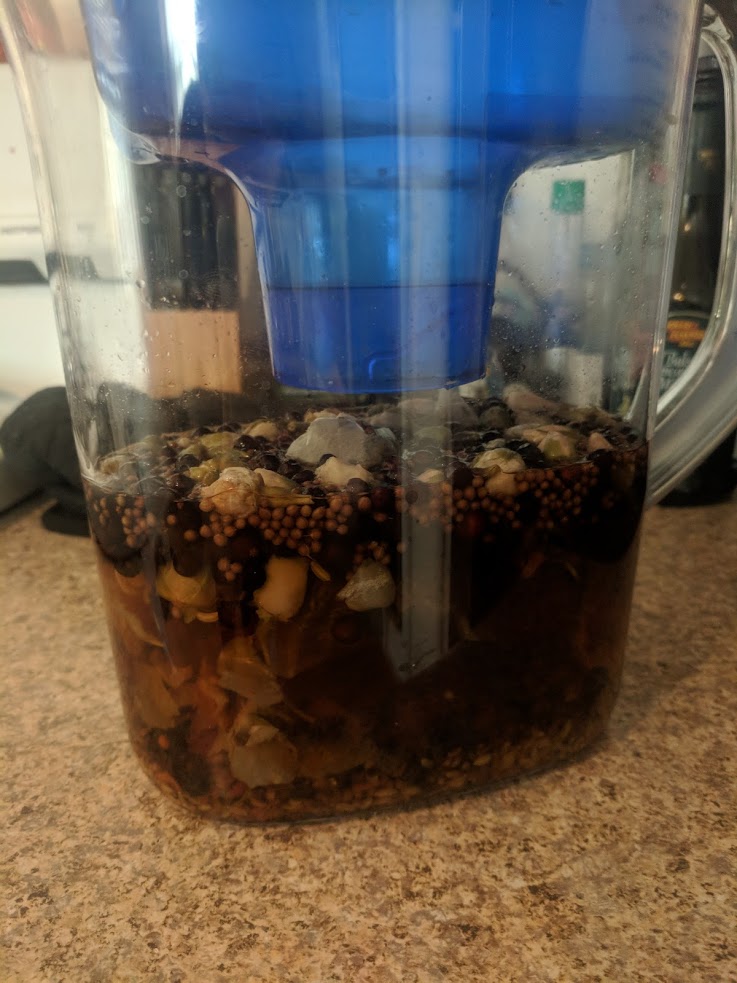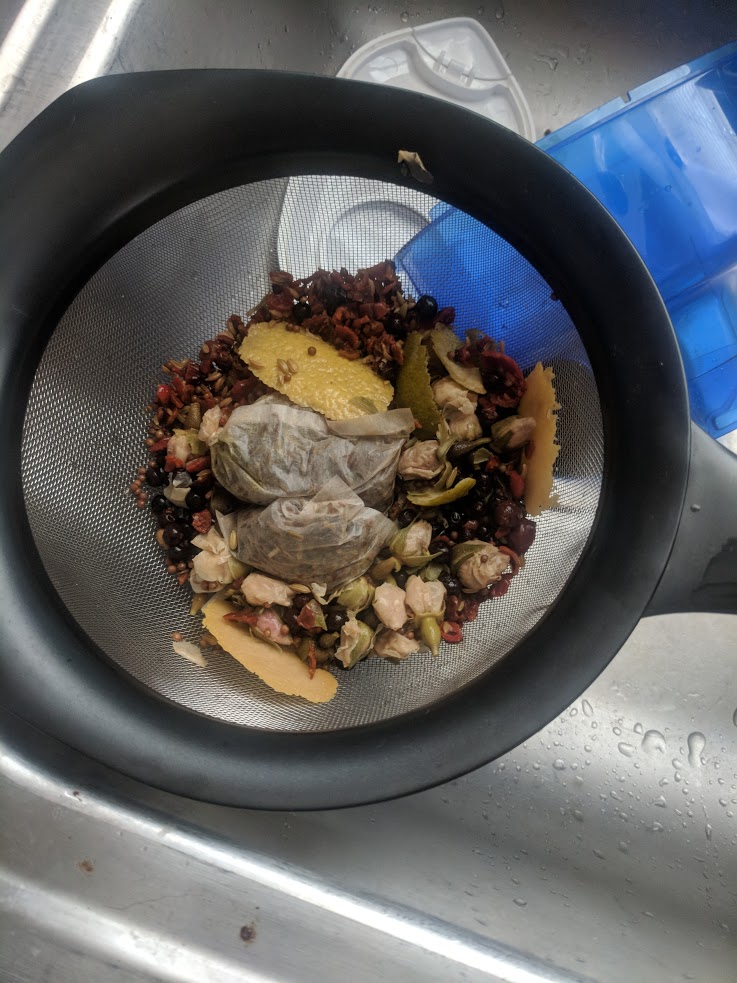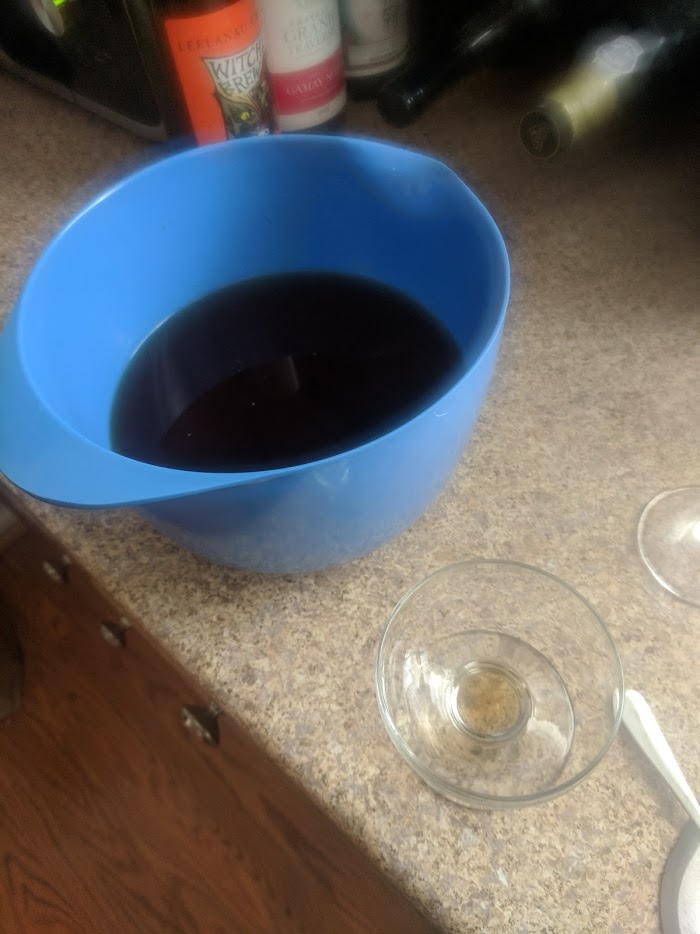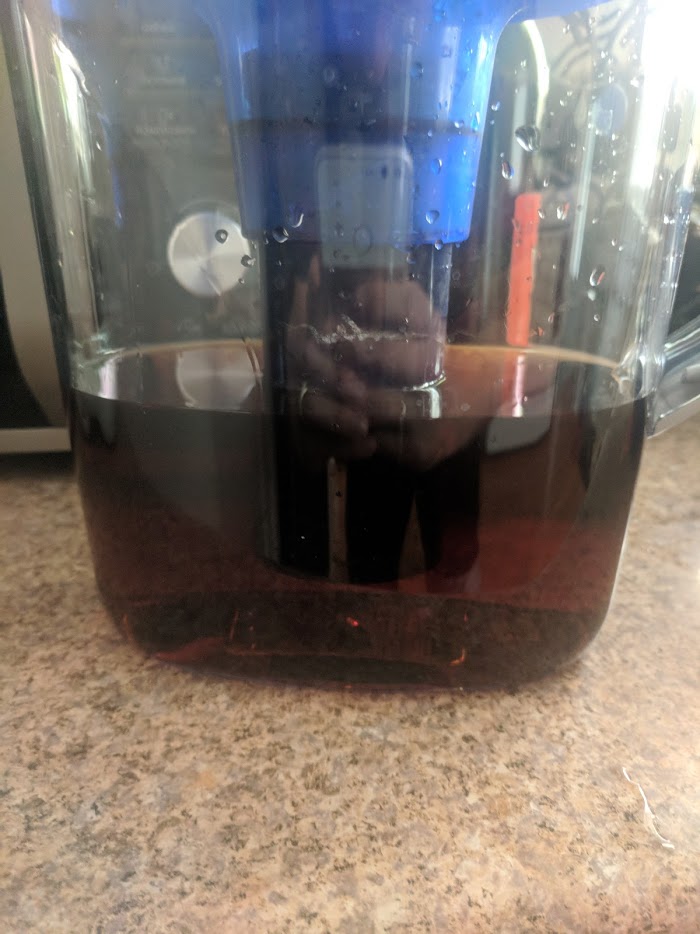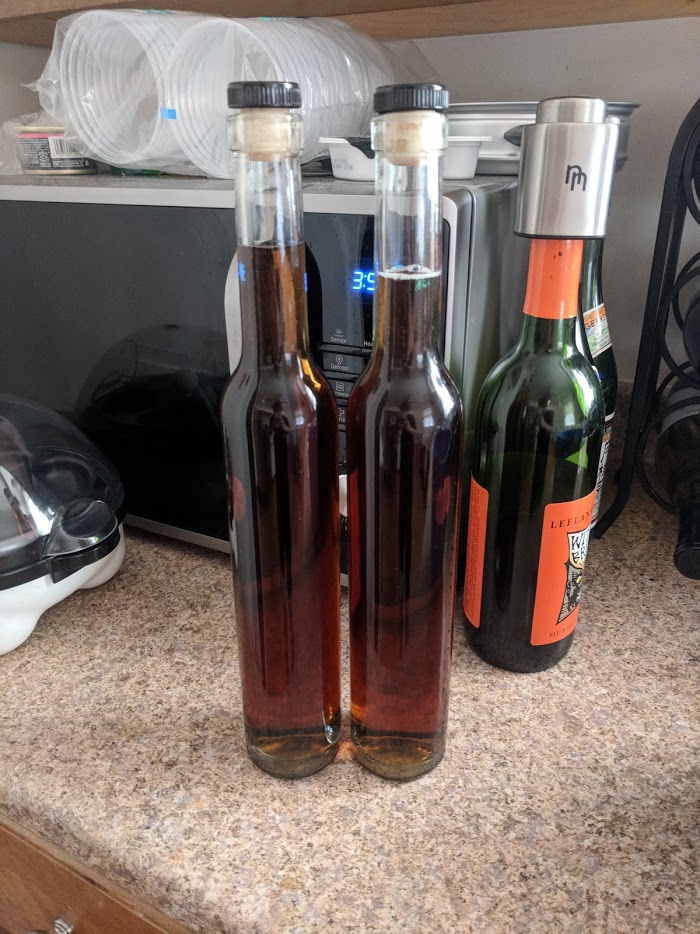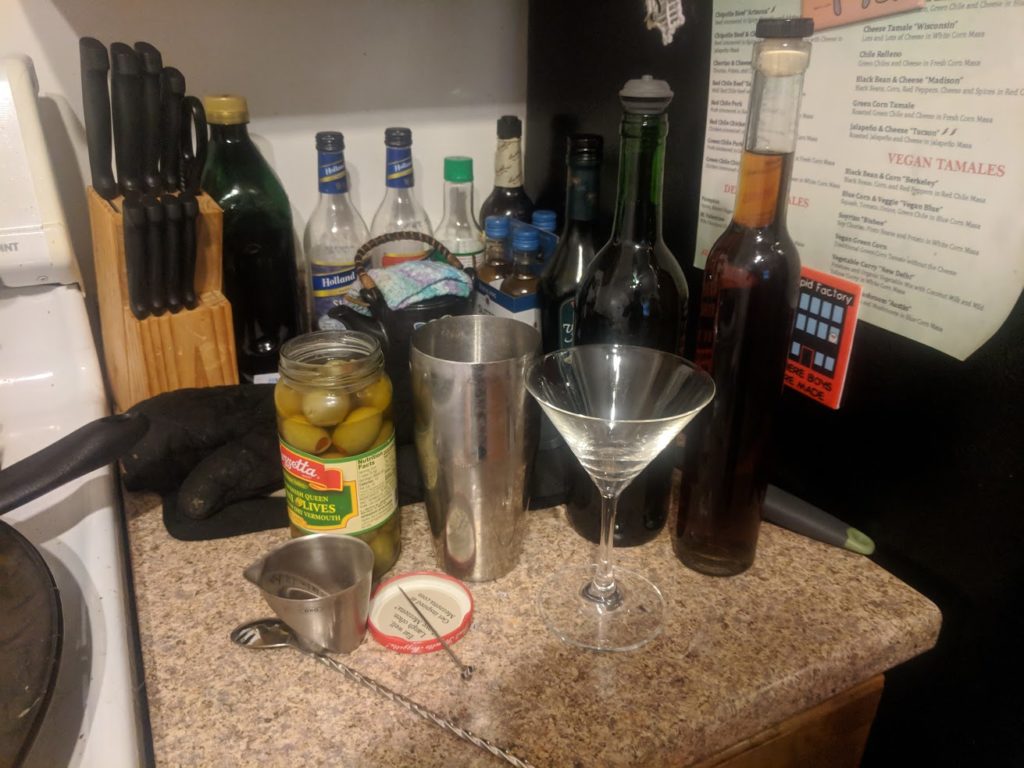It’s almost a throw-away line, though now widely quoted and oft recalled. In the original Cosmos, hosted by Carl Sagan, a scene begins with a waiter walking through an empty restaurant with an apple pie, placing it in from of Mr. Sagan who, in his usual calm, paced tone sets the scene.
If you wish to make an apple pie from scratch, you must first invent the universe.
And so it is with many things.
What constitutes “from scratch” differs from person to person, though some thing are taken from granted. Baking a pie from scratch does not – for the most part – first start with inventing the universe, but rather with rolling some dough. It does not, however, start with buying a pre-made pie crust, though in the grander scheme of things is there really that much of a difference?
The 2018 hobby de jure that I’ve adopted is cocktail culture, preparing and inventing cocktails for my own enjoyment out of a basement-based fridge. If you frequent my twitter you’ve probably seen threads on making the Trinidad Sour, the Bijou, and the Last Word (among others).
The perhaps my favorite cocktail, and the favorite of my lovely Brigid, is a simple martini. I usually like mine dry with a dash of absinthe and garnished with a lemon peel.
I love the combination of gin and absinthe enough to have commissioned a bit of artwork of it for my calf.
So, anyway, I’m rambling.
This is going to be be a cocktail thread. I am going to make a cocktail for you and I’m going to teach you, step by step how to make it. It’s got a lot of ingredients, it’s got a lot of steps, and you will need some specialized equipment.
Because I am going to make a martini, as legally as I possibly can… from scratch.
And to make a martini from scratch, you must first invent vermouth.
VERMOUTH
I chose to start with vermouth because for many folks vermouth is a secondary ingredient that can, callously, be tossed away without a second thought. There is a long-standing series of jokes that a martini is a glass of gin served with a bow to France, or on a postcard from Italy, but I don’t necessarily subscribe to that line of thinking.
A martini, in short, is a cocktail made primarily from two ingredients: gin and vermouth. The balance between those two partners it what gives it the majority of its characteristic. From “perfect” (2:1 gin to vermouth ratio) to dry (3,4,5:1) to very dry (10+:1) Other things can be added to it, but it’s got to be both.
Aside, though you use “dry” vermouth, a “dry” martini means more gin, not more vermouth (which makes it “wetter”, or sweeter). This goes back to when “dry” gin (as compared to what is now known as “Old Tom” gin) was new and it needed to be ordered specifically.
Again, I digress.
Vermouth is a herbal wine that includes wormwood, in fact the name “vermouth” comes from the French spelling of the German word for wormwood. Most recipes I’ve seen call for the addition of sherry as well as some other herbal components to be steeped into the wine after it’s made.
So my thought is… I can make wine. I’ve made plenty of wine. And wine is legal to make in my basement. So I’m going to make a crazy Michigan Vermouth from apples, cherries, cherry pits, sugar, and honey.
First order of business was dice up apples and pit the cherries.
Apples getting diced.
I wanted to keep the cherry pits because they impart their own flavors, but I wanted them separate so I could deal with them separately.
So then I threw those into some steeping bags and threw the bags into a 2-gallon plastic bucket.
Next it was time to pix the additives for wine, namely tannin and pectic enzyme into 2.5 quarts of nearly boiling water. I also used this to dissolve the sugar and the honey.
In a mortar and pestle I crushed two campden tablets (to kill any natural yeasts and bugs that might be on the fruit) and the yeast nutrient.
The near-boiling mixture is dumped over the fruit, and the nutrient/campden mixture is poured and stirred in as well.
The campden tablets take a day to do their work, so the bucket is left covered in my wine cellar overnight for the yeast the next day.
The next day, soon as I got home from work, I pitched the yeast and got a blow-off installed.
First I proofed the yeast for a bit, basically mixed it into some warm water to wake them up. I’m using my favorite: champagne yeast, because it ferments dry and I can always add sweetness back. But in this case I really am interested in complete dryness here.
Pitched it into the bucket and gave it a good stir. The red from the cherries is already really starting to come out.
And it goes back into the spider-filled hole that is my cellar.
NINE DAYS PASS
Okay, so the glory of wine/vermouth making is that there’s a lot of sitting around a doing nothing. Generally I usually stick to the rule of thumb that you should leave the wine in the first fermenter for about a week. This meant probably racking it over on a Monday, but Monday I didn’t feel well and literally went to bed around 4pm and slept until dinner at 6pm, then slept on-and-off for another four hours before dragging myself to bed where I slept soundly until work at 5am.
Tuesday was the last game of the 2018 Detroit City campaign so that wasn’t going to work. But Wednesday? Wednesday is the day I work from home so after running an errand or two I returned to rack the wine over.
So I moved my equipment up from the spider cave up to the kitchen and then brought up the wine and the degas bottle. The fermentation had been extremely vigorous and spent yeast lined the bucket and the lid. There was a small amount of lees in the degas tube, but not much and none in the bottle, which was good. I was hoping to get two-ish gallons out of this batch, which is twice what I normally make.
First step, check the wine and see if it went bad.
That color. Absolutely gorgeous. A bit strange for dry vermouth, but that’s the fun of making it yourself. Plus, as I was telling Brigid, this will help with the color of the compound gin, which is usually a pale yellow/brown.
You can see here that the color had been entirely sucked out of the cherries. I also removed the pits, not pictured here as I had them in a disposable bag that went straight into the trash. This bag is reusable so it got cleaned out.
And there’s the wine! Excluding the bit lost to the siphon, I got 1.5 gallons, so I am going to cut it with water to get an even 2. Wine I make tends to be super alcoholic anyway, so that’s not a huge concern. Even cut it’s probably at least 12% by volume. I don’t really take the readings and stuff because my hydrometer was shattered in the move and I am too cheap to replace it. Plus I don’t really care that much, I’m more worried about taste and I tend to ferment dry and then cut/sweeten at the end as needed.
Is that the right way? Probably not.
Do I care? Absolutely not.
Here’s the actual racking in progress.
The fall from wine is called “lees”, a mixture of fruit and mostly dead yeast. These yeasty fellows died so that we might drink. Tonight I raise a zero-calorie sparkling water to them. Santé!
And two happy jugs with a gallon of wine each. My plan is to bottle and only turn maybe a liter and a half (two bottles) into vermouth, which will involve a secondary period of soaking with some botanicals.
Botanicals, for those not into drinks like gin, absinthe, and vermouth among others, are the selected herbs, spices, and other organic additives that are used to give those drinks their particular flavors. Some drinks are strongly defined by their botanicals: like gin with juniper (and coriander seed), absinthe with anise and wormwood, vermouth with wormwood as well. Some drinks are absolutely crazy with their botanicals, like chartreuse (which uses 110+ last I checked) and you can find some absolutely amazing additions like I have a gin, Terrior by St. George Spirits, which uses Douglas Fir among other botanicals native to California.
The last thing I did before returning the wine to its slumber in the spider pit was take a bit of a taste test. It was good. Not the best I’ve made, but it was tart and light and crisp, which was nice. Obviously the apple and cherries were there, which was good, I was afraid I might’ve not added enough. Also very yeasty, as to be expected. With all that done, the wine will be allowed to rest for at least a week, probably a week and a half so that I could do the next racking on a weekend.
Ten…ish Days Pass
So I didn’t really keep track of time, instead I found some free time during an otherwise rather busy Sunday which also involved cooking ribs and making pasta salad and BBQ sauce to move over the two gallons of wine I had downstairs.
Pretty quick after moving the jugs into the basement, I had noticed a pretty strong lees fall and that the wine was practically clear already, almost ready to stabilize and bottle, even though it had only been three weeks or so. And you can’t argue with the results.
There’s about an inch or more of lees at the bottom and I’m going to be careful not to suck too much of that up when I make the transfer. Once again, let us raise a glass to the yeast that dies so we might drink. Salute!
It was a pretty quick day. I did take another taste of the wine. It is very, very light. Just a hint of apples and cherries. I suspect that the vermouth is going to be very heavy on the botanicals, but we shall see. The wormwood and gentian root have already arrived and everything else I can grab from Kroger or the cabinets. Currently I am waiting on a botanical for the gin, rose hips, which had originally arrived in pill form.
So apparently that’s a thing. Thanks online herb shop.
Two. Weeks. Later
So, since I have everything in, including another last second order from the online herb shops, I’ve decided to make my vermouth at the next racking, which I think was on day thirty-four, but really I’ve lost count and care at this point. Also this is being written on the final day and I’m starting to get sick and the next section (“GIN”) is a huge step back in time for me but is more or less a straight narrative for all of you.
So here’s our botanicals for the vermouth: wormwood, gentian root, sage, cardamon pods, coriander seed, chamomile flowers, cinnamon sticks, half a vanilla bean, the rind of a lemon, and the rind of an orange.
Here it all is as a tea-like mixture. I have to admit the chamomile bag is great just to open and stick your face into. I’ve really enjoyed that part of this whole experience: smelling and trying all these botanicals in the raw forms and then as a drink.
I put the loose botanicals in tea bags and then pour 1500ml of my wife, freshly racked over them. I’ve also added stabilizer to the mix to prevent the yeast from reawakening with the addition of a bit more sugar. As you can see here, the tea bags are floating, which is a bit of a problem. After some attempts to push the air bubbles out of them, I give up and tie them to a spoon and throw that in there too. Fuck it.
For those of you following along on twitter, this is when I made my Fuckitmosa, using the remains of the lemon and the orange. That was fucking amazing and temporarily held my cold at bay. I then took the mixture down into the spider den to await its fate.
Two. More. Days. Pass.
It is now day thirty-six or so.
I’m tired. I’m definitely getting sick. I’m over-caffeinated. And I’m tired.
Yes, I know I literally just wrote that bit above, but I’m also hungry and that’s exacerbating the whole problem. Also I just drank raw, warm vermouth so… you know… spoilers.
Here is everything we need to finish up, including a bottle of extra dry sherry, which is going to help fortify the vermouth. In this picture I’ve naively believed I’d be able to use a coffee filter to filter this. In time, I will be proven a fool.
This is going abysmally slow and I have to hold it.
Just dumped it into the bowl.
Then ran it through the brita. Not sure why I didn’t just do this to start, but again: hungry, tired, sick.
And there we go! The vermouth is done! I’ve corked one bottle and the other I’ve just stuck a stopper in because I’m going to pop it in the fridge and later tonight I’m going to finally have my fucking martini.
But first I’m going to try the vermouth raw. The color is very interesting, and though the whole thing started red, it’s a pale gold here. And the nose is really, really full of cinnamon and chamomile, but the taste is very, very herbal. I don’t think Brigid is going to ever drink that straight again, and honestly, I might not either.
I’ve been told sweet vermouth is good on the rocks with some soda water or even just as-is, but this? This might need a little something to cut the flavor. But it’s not bad, just strong.
GIN
Gin is a deceptively simple and beautiful drink. I was on the gin subreddit recently talking about what botanicals we liked in gin and the conclusion of my response was this:
I like being surprised with something new or unexpected, which I think is why I love botanical-based spirits like gin, vermouth, chartreuse, and absinthe so much. There’s a piece of the maker’s soul in there. They chose these botanicals over all others to give me a little taste into their minds.
The booze fridge in my basement is always full but the vast majority of it is gin. Gin gin gin-gin-gin. Piney gin. Citrusy gin. VERY piney gin. Peppery gin. Detroit gins. London gins. Dry. Old Tom. Fruity gin. American, British, German… you name it, it’s probably there.
And everything that isn’t gin can probably be mixed with gin some way to make something better.
So I really considered what I wanted out of this gin. I had already done the compound process to mixed success. The flavors, while there, were very muted and it tasted, even when served plain, very watered down. I knew I needed to up the ante.
So up it I did.
This gin is a very floral gin. For one liter of vodka the botanicals were:
- 45g juniper
- 15g coriander seed
- 3 cardamom pods
- 6 pepper corns
- 6g fennel
- 10g lavender flowers
- 15g rose buds
- 20g rose hips
- 3g lime peel
- 8g lemon peel
The final ingredient, the rose hips which had originally been delivered in pill form, arrived on day 25 and I ran out and bought a liter of vodka soon after with Brigid.
Basically you weigh out and pour each botanical into a container and then add vodka. I also strain the vodka because I hate how it tastes.
And then you basically steep the botanicals in the vodka like you’re making a very slow, very boozy room-temp tea. This is called a compound gin, because the botanicals were not distilled with the alcohol. Distilling is illegal without a permit in the US because, among other things, it’s dangerous and can one can potentially produce poisonous drinks by bottling the pure methyl alcohol that comes out at the start of the distilling process.
I have been told that the above is incorrect – that a small still would not create the pressures needed to explode and assuming one began your gin with a pre-distilled grain alcohol, there would (for obvious reasons) not be any methyl alcohol.
Compound gins are far easier to make, and while they might have an ugly brown color, instead of crystal clear, they are absolutely delicious and you can make smaller batches to experiment with your favorite botanicals.
So after adding the first day’s botanicals, I put the gin in the basement next to it’s eventual partner in boozy crime, where it’ll sit (with an occasional shake) for two days. After those two days you have what appears to be a tea and smells like all hell.
What I do is remove the botanicals by running it through a strainer in a bowl, give it a taste, then run it through the filter, give it a taste, and repeat as necessary. Sometimes it is helpful to remove botanicals at day one and and add fresh ones, but this one I let sit for the two days. And the initial nose is full of flowers. It’s amazing.
The first taste was heavy on the vodka, and gritty. Both of these are easily removed by the brita.
So that’s not the gin you’re used to – clear as day, but it’s definitely gin. I took a sample to my lovely wife, who approved, and I bottled it up.
The initial liter of vodka gave us about 750ml of gin. There are some losses to the botanicals, though I did give them a light presing, as well as to the filter. I wasn’t suspecting it’d be that much, but it is what it is, and 750ml is plenty enough for the original task.
THE MARTINI
Twenty-nine hundred eight-five words later… thirty-six days… several herbal store orders, one botched rosehip conundrum, and a few drips to the liquor store for vodka and sherry. It’s all leading to this. Possibly either the best, worst, or most mediocre martini I’ve ever made.
So, I started off intending to make a 5:1 martini, garnished with olives, but a math error meant I made a 10:1 martini garnished with olives, so this is a bit out my normal zone.
I gathered all the materials.
- 2.5 oz homemade compound gin
- .25 oz homemade dry vermouth
- 2 olives
We’re going to stir with ice to combine and chill, then pour into a martini glass. When finished, it should look something like this:
A normal dry martini is crystal clear, this is not. The vermouth is a pale gold, the gin a deep rusty red. Combined it looks more like a Manhattan or Martinez. At 10 to 1, this is a very gin-forward drink. The gin, with heavy notes of juniper with a floral bouquet on the nose fades into an herbal note.
Does this finish among the best martinis I’ve ever made or had? No. Far from it. The gin is a tad powerful and I think that even with a full half ounce of vermouth it still wouldn’t be enough to balance out. This might need a retesting at 3:1 or even 2:1 to completely balance out.
However, it is far from the worst martini I’ve ever had. As it gets farther down in the glass and the olive brine begins to soak in, it’s a bit more balanced than when I started.
So there you go: a simple, straightforward way to make a martini, one of the oldest and most recognizable cocktails ever in only 36 days and probably close to a $100 in materials not including the equipment I had lying around for wine making.
Too often, I think, we often forget the craftsmanship that goes into the things around us; from food to furniture, from our cars to our cocktails. There is a primal sort of joy in doing something ‘from scratch’ from taking the long way home instead of the direct routes.
I like to step back and do those things when I can, and being as unhandy as I am, that can be both nerve-wracking and dangerous. So when the opportunity presents itself, I don’t hesitate to take it. Whether it’s mixing a Trinidad Sour, choosing botanicals for a compound gin, or sitting down to write a chapter in a book. Sometimes it’s worth rolling things back as far as you can and retracing the steps of so many before you little by little.
If anything, I hope this very long update has inspired you to try something new, to explore the process of creation. And I wish you luck on that journey. Until next time.
Cheers.

